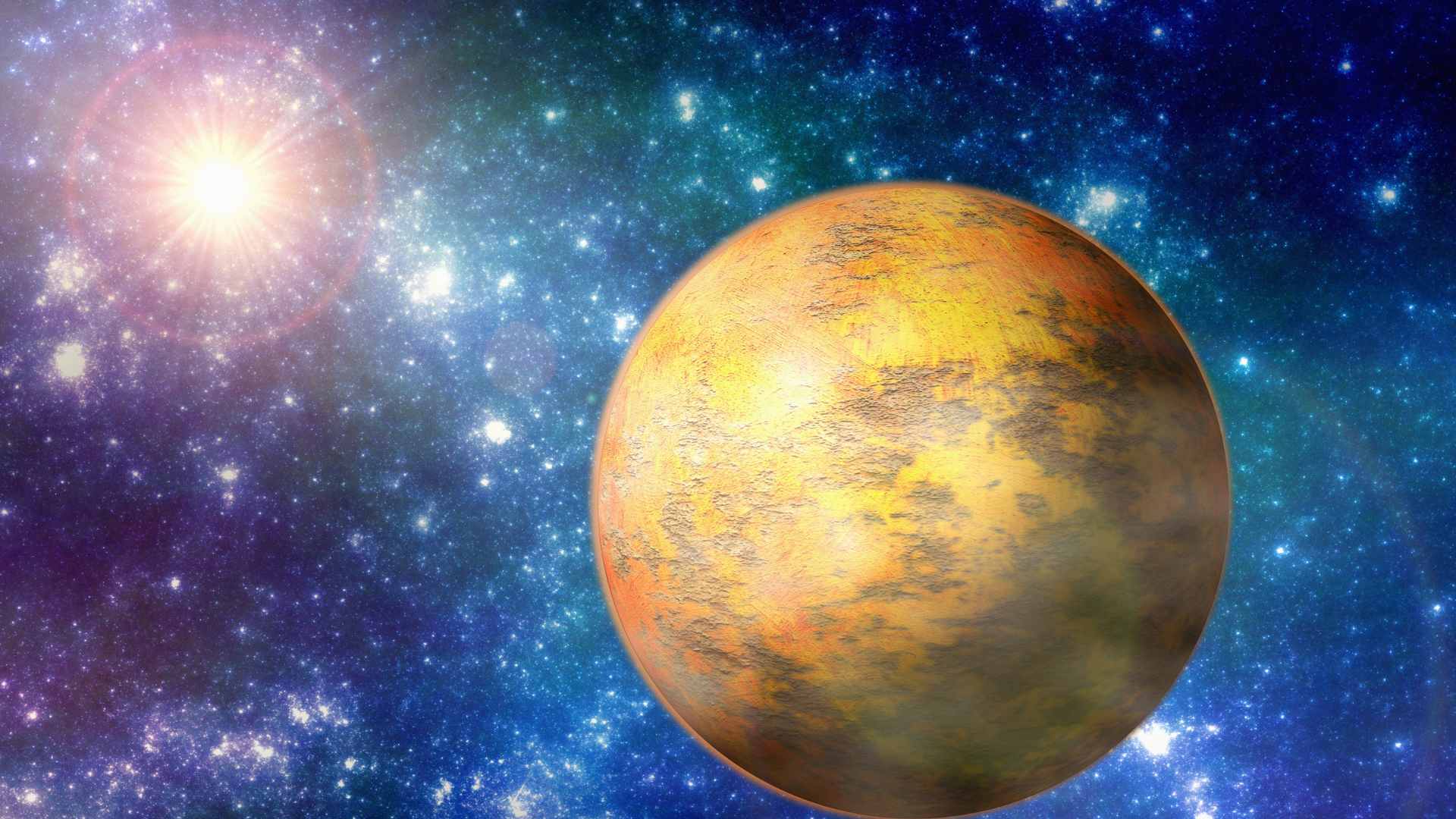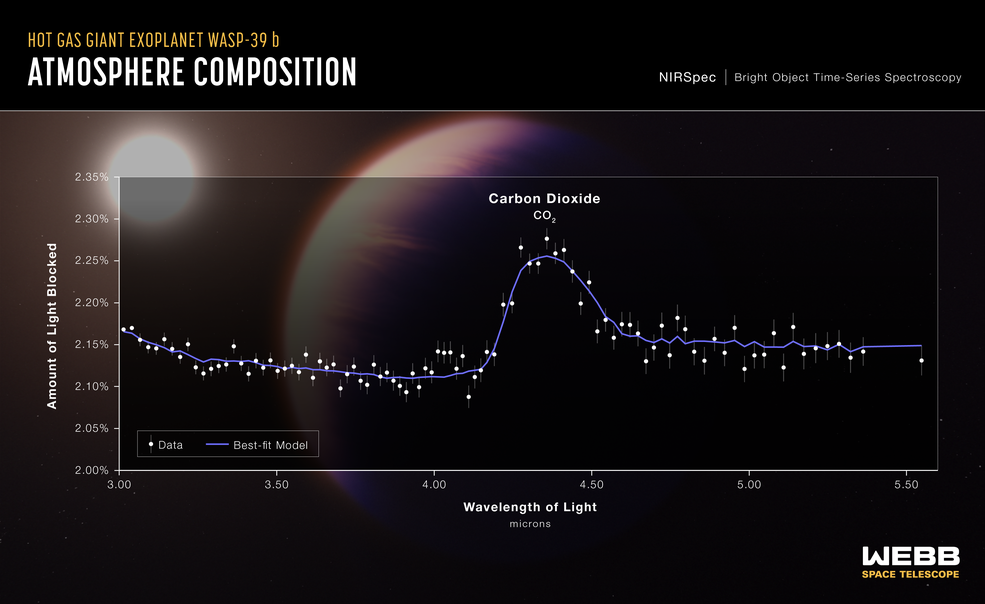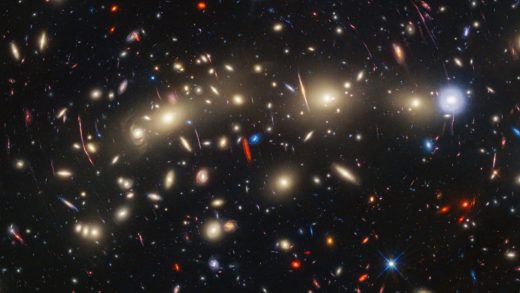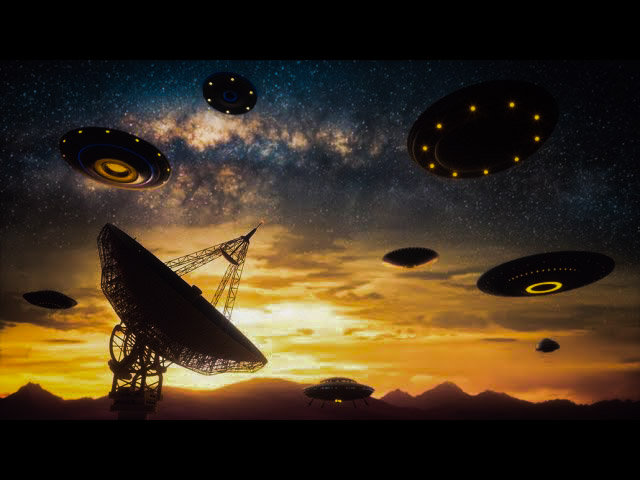James Webb Detects Carbon Dioxide in the Atmosphere of an Exoplanet: When Aliens?

Adding one more discovery in its discovery-list and encouraging us to hope for finding alien life-forms, NASA’s James Webb Space Telescope has for the first time detected carbon dioxide (CO2) in the atmosphere of a Saturn-size planet 700 light-years away from us.
Being the first unambiguous detection of the gas in a planet beyond the Solar System, the discovery provides clues to how the planet formed, according to astronomers.
The result also shows just how quickly Webb may identify a spate of other gases, such as methane and ammonia, which could hint at a planet’s potential habitability for life.

Image/Illustration Credits: NASA, ESA, CSA, and L. Hustak (STScI); Science: The JWST Transiting Exoplanet Community Early Release Science Team
Nikku Madhusudhan of the University of Cambridge, who was not involved in the study, said that Webb is ushering in this new era of the atmospheric science of exoplanets.
The Webb telescope has already proven its capacity to bring the universe’s most distant stars and galaxies into our field of view since it is sensitive to infrared light wavelengths, which are usually blocked by the Earth’s atmosphere.
According to astronomers, the Webb space telescope may find a lot more gases in smaller Neptune-sized planets and perhaps even rocky planets that are approximately the size of Earth.
Related:
The hot gas giant WASP-39b, which orbits its star every 4 days in an orbit far closer than Mercury’s, was the focus of the earliest exoplanet observations.
The team began working on the initial data when it was collected on July 10. The spectral dip of CO2 “sticks out like a sore thumb,” adds Webb team member Jacob Bean of the University of Chicago, even in raw data based on a single transit over the star. He states that there have previously been some hesitant detections of the gas, but none of them were reliable. Bean also claims that Webb’s spectrum was “the right size, the right shape, and in the right position.” “CO2 just popped out.”
The findings were recently reported by Bean and his colleagues on the preprint server arXiv, and they will soon be published in Nature.
The atmosphere of WASP-39b had previously been discovered by Hubble and Spitzer to contain water vapor, salt, and potassium. In addition to another gas whose spectral signature was initially unknown, Webb has now included CO2. Later observations made it clear what it was, but Bean refused to talk about it until the findings were peer evaluated.
Recommended: Astronomers discovered another Earth-like exoplanet!
According to team member Laura Kreidberg of the Max Planck Institute for Astronomy, the team will publish the planet’s complete spectrum from optical to midinfrared in the next months and “make a complete chemical inventory of its atmosphere.”
Finding CO2 is significant because it can provide information about a planet’s “metallicity”—the proportion of elements heavier than helium that make up the planet. All of the visible matter in the universe was formed from the hydrogen and helium produced in the big bang, but anything heavier was created later in stars. Heavy elements, according to researchers, are essential for the formation of big planets.
The team makes the guess that the planet’s metallicity is similar to Saturn’s based on the CO2 signal from WASP-39b. WASP-39b has an oddly similar mass to Saturn. Even though the planets’ orbits are vastly different, there are some similarities between them, claims Bean.
Stating that he doesn’t know yet, Bean asks, “Can we find a common story for these two objects ?”
The best telescope yet by NASA, the European Space Agency (ESA), and the Canadian Space Agency, James Webb is designed to find the first galaxies that formed in the early universe, observe unexplored planets around distant stars, find potentially habitable worlds, and observe stars throughout our own galaxy.
And, as experts say, such a capability of detecting gases like CO2 around an exoplanet normally indicates that the Webb telescope has potential to find clues about alien life forms as well in the future.
More info here…
Auto Amazon Links: No products found.


